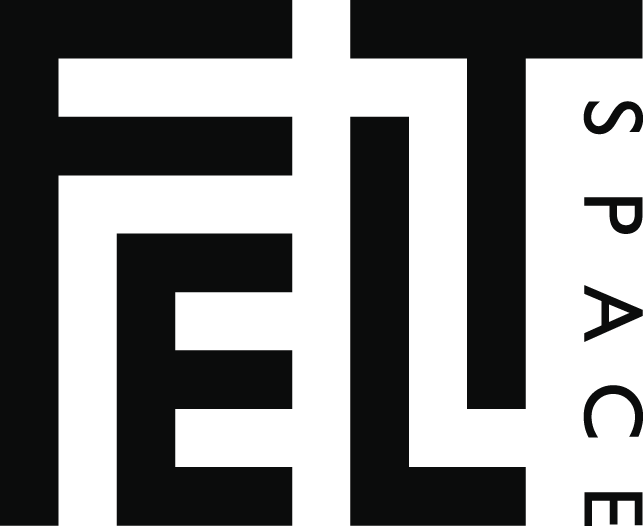Earth Coincidence Control Office / Studies of Nature / Shifting Interior Cavities – February 2017
Artist: Kieron Broadhurst and Jack Wansbrough / Ash Tower / Gail Hocking
Author: Bernadette Klavins
‘Fiction and non-fiction contaminate each other. The contamination destabilises each category until, eventually, between them a new equilibrium is attained.’
- David Robbins, ‘Warm Science Fiction’ (1)
‘Snorky…talk…human…’
- Snorky the dolphin, ‘Treehouse of Horror XI’, The Simpsons
Threads of truth and misinformation have been woven together to form the fabric of Earth Coincidence Control Office (ECCO), an installation by artists Kieron Broadhurst and Jack Wansbrough in the Front Gallery of FELTspace. Here the two speculate upon the mysterious organisation/cosmic entity ECCO, and the potential existence of its Adelaide office (2). This installation utilises ECCO’s murky historical narrative as a vehicle to engage with the construction of truth and history. As a result, the imagined space becomes a playful site for storytelling and myth-making. We are already in a culture where ‘facts’ are often loosely handled and represented, such as those narratives that claim to be ‘based on a true story’, or the anonymously edited content of Wikipedia pages. ECCO similarly becomes a space in which truth is flexible, however the work consciously brings attention to its irreverence.
In ECCO, humour provides a playful access point for viewers, but also acts as a tool for creating the slippage between fact and fiction. Broadhurst and Wansbrough kit out the space with an assemblage of domestic and pseudo-scientific objects, including a series of ambiguous photographs with moments of ‘coincidence’ circled with red marker, an atlas speared with metal rods at particular coordinates, a set of novelty scales with 750g of Himalayan salt resting upon them (apparently the weight of a soul), and an excess of dolphin paraphernalia. Each item becomes weighted with a potential significance within the story’s context, however the underlying humour cautions one against taking anything too seriously. The absurd and fragmented elements of the space smudge the lines between artistic liberties and the authentic eccentricities of ECCO’s narrative. In this way, this imagined space is a work of speculative history, manifested through play, storytelling, humour and the conjoining of fact and fiction.
The stability of the category ‘fact’ remains relevant as we contemplate Ash Tower’s Studies of Nature. This artwork emerges from the curious situation in which published scientific papers are then retracted by the author, rendering its content unusable. Studies of Nature centres upon the papers withdrawn from scientific nature journals over the past three years. By drawing our attention towards these aberrations, Tower empathises with the sincere qualities of the author’s retractions, and acknowledges the labour of research embedded within these papers. Through ascribing the titles of these retracted articles upon an honours board, Tower memorialises these endeavours whilst also questioning the revisable nature of facts within the scientific community. A bound volume of the corresponding articles and retractions sits in dialogue with the board, becoming a resting place for these bodies of work that otherwise remain in limbo. The academic furnishings uphold a sense of ceremony and stability, providing contrast with the transient status of the ‘facts’ they acknowledge. We are invited to contemplate the ongoing process of editing and reshuffling truth within the field of science, and the way our understanding of the world is correspondingly mutable over time.
In Gail Hocking’s video work Shifting Interior Cavities, we observe a poetic interaction between two bodies of water. A wall assembled from bricks of frozen water stands at the edge of the ocean’s tide. The water’s movement is quiet and constant, creating tension between the melting ice and the encroachment of the lapping waves. The shells of ice become vulnerable as they lose their definable edges, as they begin to succumb to the surrounding climate. We are told each prism of ice holds the percentage of water contained in a human being. Perhaps this underlines our body’s non-human materiality, in an attempt to close the divisions between life and matter (3). The quality of the video is both cinematic and meditative, through which we become affected by the water’s transformative process. We might begin to empathise with the ice becoming gradually engulfed by the ocean, as we consider our own transient materiality. The relationship between melting ice and the ocean is also suggestive of our current climate situation, through which we might more broadly consider the political capacities of both human and non-human forces.
(1) David Robbins, ‘Warm Science Fiction’, in Pierre Huyghe, Le Chateau de Turing (Dijon: Le Consortium Dijon and Les presses du reel, 2003), 14
(2) In the early 1960’s, physicist John C. Lilly was concerned with developing a common language between humans and dolphins. The project involved the shared living quarters between Margaret Howe (human) and Peter (dolphin). It was later in the 1970’s that Earth Coincidence Control Office was established, a cosmic entity ‘discovered’ by Lilly; Christopher Riley, ‘The dolphin who loved me: The Nasa-funded project that went wrong’, The Guardian (June 2014) URL: https://www.theguardian.com/environment/2014/jun/08/the-dolphin-who-loved-me, accessed 10th Feb 2017
(3) Jane Bennett, Vibrant Matter: A Political Ecology of Things (North Caroline: Duke University Press, 2010), viii; Gail Hocking, artist statement for Shifting Interior Cavities, 2017
